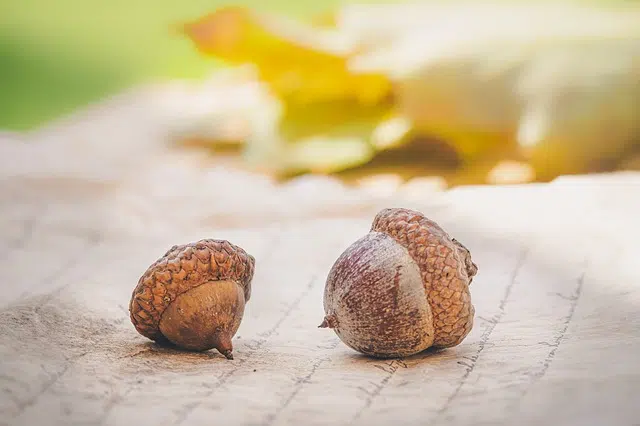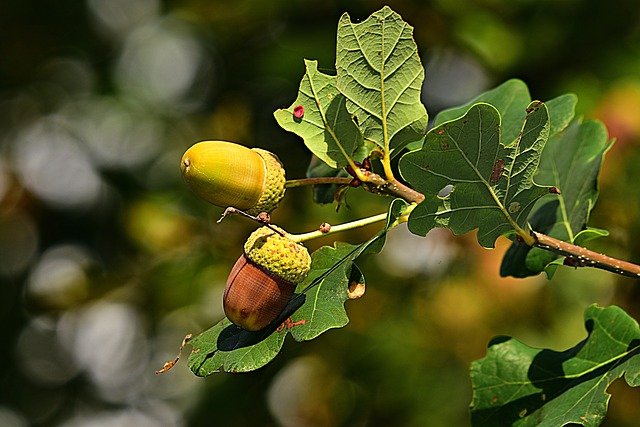
The acorn is the fruit of the holm oak, oak and other trees.
The etymological origin of acorn would go back to the Greek balanōtḗ . This word would have reached classical Arabic as ballūṭa , which in turn led to the Hispanic Arabic ballúṭa .
The Royal Spanish Academy ( RAE ), in its dictionary , recognizes more than a dozen meanings of acorn . Several of them are regional, being specific to particular countries.
The acorn as fruit
The fruit of the oak , holm oak and other species that belong to the same genus of trees (scientific name Quercus ) is called an acorn. It is an achene : a dry and non-dehiscent fruit, since the opening of its pericarp does not develop naturally to release its seed.
As with the rest of the achenes, each acorn has a single seed , which is not welded to the pericarp (the outer layer of the fruit that protects the seeds), lacks albumen and has fleshy cotyledons with a high level of starch. The acorns are about two centimeters long, pointed and oval in shape.
The shell of the acorn, on the other hand, is brown in color and is usually quite hard. It should be noted that the fruit constitutes food ingested by different animals and, in some cases, it is also consumed by humans.

Many animals feed on acorns.
Its importance in nutrition
Different animals in the wild feed on acorns. The predilection of squirrels for this fruit, for example , is known.
Goats and pigs also eat acorns. Regarding sow cattle (which includes pigs and wild boars ), they are usually fed acorns, taking advantage of their large amount of nutrients .
In this context, it is common for these cattle to be taken in Spanish territory to graze in dehesas (wooded land with grasses), where acorns fall. The Iberian pig fed in this way allows us to obtain the famous Iberian acorn-fed ham .
These pigs are raised in the pastures, where they feed mainly on legumes, herbs and cereals, except during the fattening period when grass and acorns are used. The quality of the ham is linked to the curing process, but also to the purity of the breed of pigs, their free breeding in the aforementioned pastures and the acorns they eat during fattening.
Regarding the consumption of acorns by people, it is important to neutralize or remove the tannins that are toxic and give them a bitter taste. Once this process is done, the acorns are usually consumed toasted , converted into flour or liqueurs .
Other uses of acorn
The RAE indicates that acorn can also be the name given to the carnation bud before it opens and the glans (the head of the penis). In Honduras , the pineapple is referred to as acorn, while in Costa Rica the coffee bean is called acorn when it is already prepared for processing.
The crustacean known as glans , meanwhile, is called sea acorn . The pig, for its part, can be described as an acorn animal .
